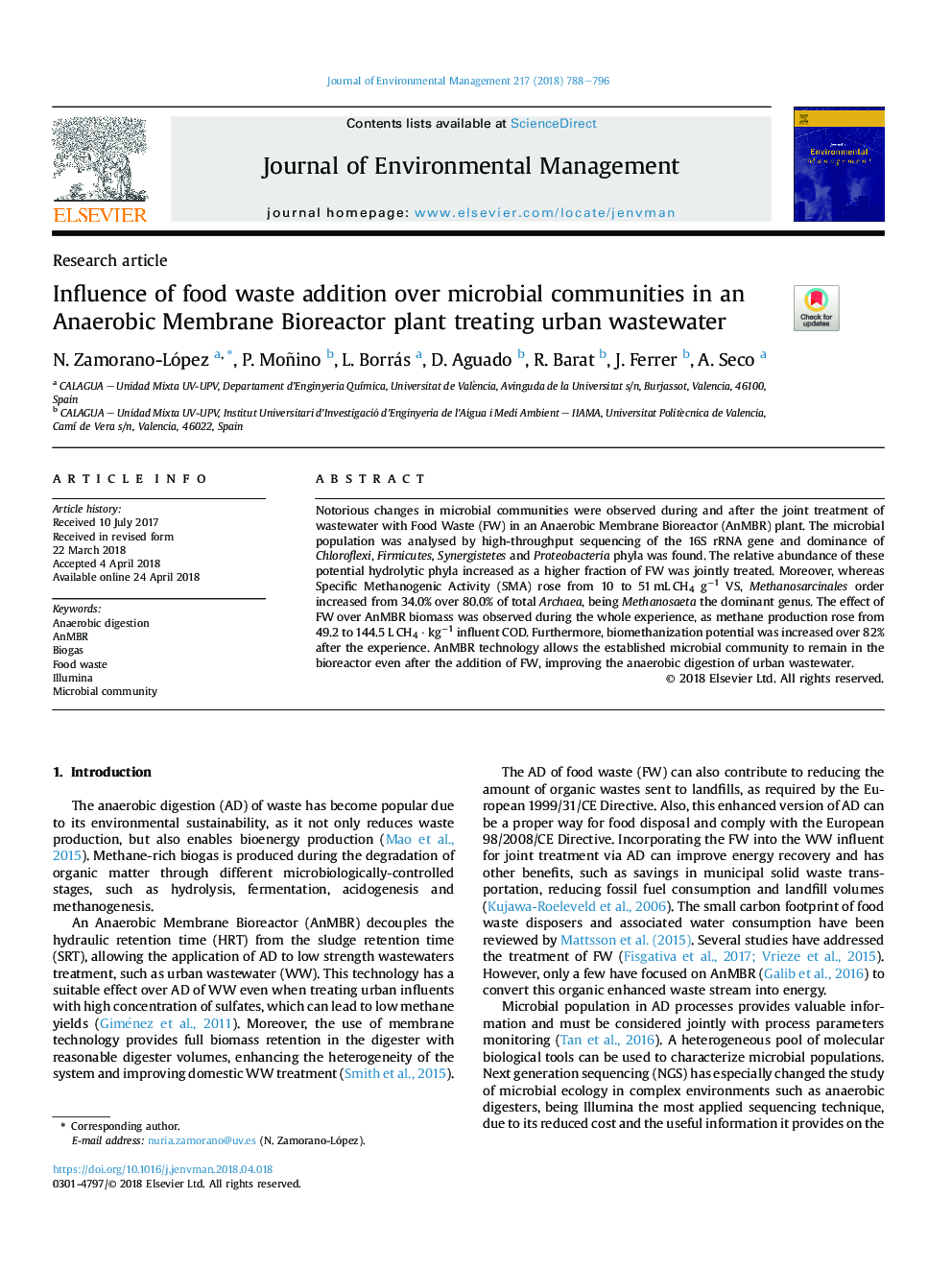| Article ID | Journal | Published Year | Pages | File Type |
|---|---|---|---|---|
| 7477812 | Journal of Environmental Management | 2018 | 9 Pages |
Abstract
Notorious changes in microbial communities were observed during and after the joint treatment of wastewater with Food Waste (FW) in an Anaerobic Membrane Bioreactor (AnMBR) plant. The microbial population was analysed by high-throughput sequencing of the 16S rRNA gene and dominance of Chloroflexi, Firmicutes, Synergistetes and Proteobacteria phyla was found. The relative abundance of these potential hydrolytic phyla increased as a higher fraction of FW was jointly treated. Moreover, whereas Specific Methanogenic Activity (SMA) rose from 10 to 51â¯mLâ¯CH4 gâ1 VS, Methanosarcinales order increased from 34.0% over 80.0% of total Archaea, being Methanosaeta the dominant genus. The effect of FW over AnMBR biomass was observed during the whole experience, as methane production rose from 49.2 to 144.5â¯L CH4 · kgâ1 influent COD. Furthermore, biomethanization potential was increased over 82% after the experience. AnMBR technology allows the established microbial community to remain in the bioreactor even after the addition of FW, improving the anaerobic digestion of urban wastewater.
Related Topics
Physical Sciences and Engineering
Energy
Renewable Energy, Sustainability and the Environment
Authors
N. Zamorano-López, P. Moñino, L. Borrás, D. Aguado, R. Barat, J. Ferrer, A. Seco,
